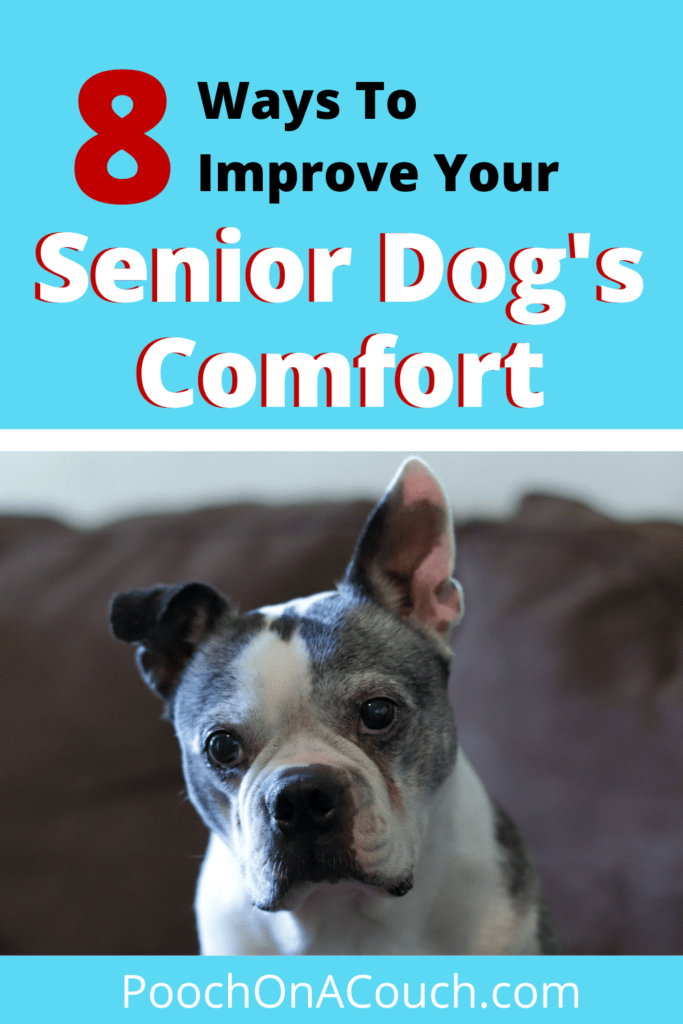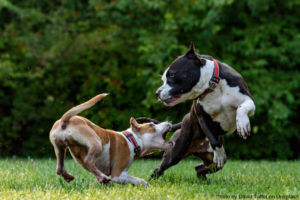I think I enjoy fostering senior dogs more than any other life stage. Senior dogs usually require less training and I like their overall demeanor. (usually!)
That said, they can be a challenge. It takes a minute to learn the best way to provide for a senior dog’s comfort. Plus, a senior dog’s health can change more rapidly than a younger dog, so I have to keep my observation skills active.
When I foster senior dogs, they don’t come with their history. Whereas my dog Otis has demonstrated subtle changes in his activity and interests as he ages, I don’t necessarily know if this senior foster dog is displaying activity that is at its baseline, or if their inactivity is due to pain or discomfort.
It can take a minute to get to know your foster senior dog and what its health needs are. Does this dog have any hidden health issues or pain issues? How do you figure this out? How can I best provide for this senior dog’s comfort?
At What Age Should You Consider Your Dog To Be A Senior?
According to the AVMA, a dog’s lifespan may be determined by their size. While in truth it varies from dog to dog, small dogs are considered in their senior years around the age of 7 while larger breeds can be considered a senior dog when they reach 6 years of age.
A great question to ask your veterinarian is “When should I consider this dog to be a senior?
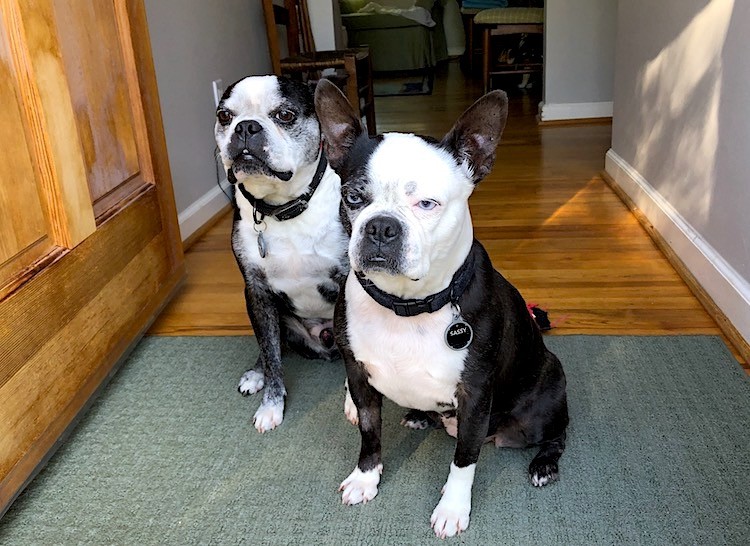
Not All Senior Dogs Will Need An Abrupt Change In Routine
There is no switch that gets flipped when a dog becomes a senior. Aging is a gradual process and dogs often don’t act like they are in pain until they are REALLY in pain.
That said, we have ways we can provide for our senior dog’s comfort in our day-to-day interactions and through keen observations. We can make easy changes now so that our dogs can move through their senior years in comfort, injury free, and with the best healthcare we can provide.
Here are 8 Basic ways we can provide for our senior dog’s comfort:
1. Regular Veterinary Care Helps to Ensure Your Senior Dog’s Comfort
Older dogs need more frequent veterinary care.
At a minimum, all adult dogs need to see a veterinarian once every year for a routine check-up. Senior dogs, on the other hand, need to see a veterinarian more frequently.
Depending upon your senior dog’s health your veterinarian will be able to tell you when it’s time to begin twice-a-year check-ups. With regular veterinary care, new illnesses or conditions can be discovered and treated early. Keep your senior dog comfortable with age-appropriate veterinary care.
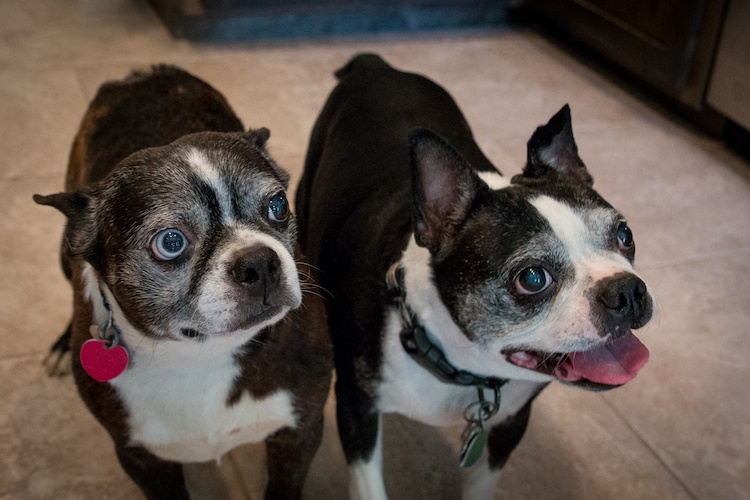
2. Support Senior Dog’s Comfort With Age-Appropriate Diets and Supplements
Diet
Senior dogs can require a different diet than what you feed your younger adult dogs. I’m sure I’m not sharing earth-shattering news!
There are many specialty diets on the market specifically tailored to the needs of the senior dog. Your veterinarian is your best source for choosing the appropriate diet for your senior dog.
A complete blood/urine analysis will help your veterinarian determine if your senior dog needs to be on a specialized diet.
Supplements
Supplements can be a great way to support your senior dog’s comfort in their advanced years. While I am not qualified to tell you which supplements you should give your senior dog, your veterinarian most certainly is. You probably know this already, but it bears mentioning here: supplements are not regulated and some are worthless.
There are supplements to support joint health, organ health, gut health, cognitive health, and others.
Personally, I give my dogs supplements for their joint health and to help Sassy cope better with seasonal allergies.
Ask your veterinarian: “Are there any supplements you advise I start adding to my senior dog’s diet?”
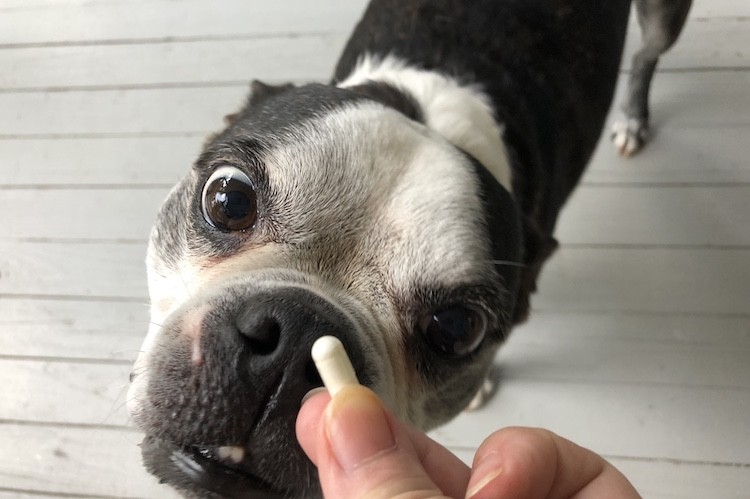
3. Adjust The Way You Groom Your Senior Dog
Grooming needs change as a dog gets older. Here are some ways to adjust how you groom your dog:
- Add a bath mat to the tub or shower floor for your senior dog to stand on so that they will not slip. Not only is this more comfortable and relaxing, it can help prevent injury caused by slipping. This is a good idea for all dogs, but especially important for the seniors.
- Do not let your dog air-dry, especially in the cooler months of the year. If you are able, make the bathroom toasty warm.
- Use bath time as a time to massage and do quick skin assessments. Check ears, eyes, and teeth for any new problems.
- Pay attention to areas that while before, your dog could “lick” clean, they now may have more difficulty reaching those areas.
- Opt for softer brushes and brushing techniques. As a dog ages, so does their skin. It can become tender and more easily tear.
- Keep toenails and paw hair trimmed to help avoid slipping on hard surfaces. Use a groomer if this is something you are not comfortable doing. A dog’s nails should be trimmed short enough that they do not “click” on the floor as they walk. Nails that are too long not only are uncomfortable to the dog, over time they can cause joint issues as the dog’s skeletal system has to over-compensate for the paw being off balance.
- If your senior dog’s coat is one that requires grooming, consider if you need to keep that coat shorter or longer than you did in the past.
4. Arrange A Comfortable, Risk-Free Environment
Flooring
Slick surfaces are hard on a senior dog’s comfort. Hardwoods, tile, linoleum, and alternative wood flooring are harder for a senior dog to navigate. Use area rugs to create paths for your senior dogs.
As a bonus, area rugs, especially pet-friendly ones, reduce damage to your flooring by minimizing scratches, gouges, and pet stains.
Help Your Senior Dog’s Comfort – Reduce Jarring the Joints
As dog’s age, their bodies can’t navigate as well as they could when they were younger. Going up and down stairs is harder and harder as a dog ages. There is an increased risk to fall.
Jumping on and off of furniture also increases risk of injury to hips, knees, the spine.
Use pet steps, pet ramps, and leash walk your senior dog up and down steps, carry them if they are small enough and you are able.
Train your dog to wait for you to give permission before allowing them on furniture or down stairs. This way, you get to control how you help protect their comfort.
Invest In An Orthopedic Bed To Help Maximize Your Senior Dog’s Comfort
I’d venture to say that most senior dogs have arthritis somewhere in their body. Firm beds are more supportive and comfortable than plush bean-bag-style beds.
5. Keep an Eye Out For Vision Changes
A senior dog’s comfort is certainly influenced by their ability to see.
As part of your senior dog’s semi-annual wellness check, make sure your veterinarian is evaluating any changes to your dog’s vision, such as the development of cataracts or increased eye pressure.
If you are able, I also think it’s a really smart idea to have your senior dog seen by an ophthalmologist for a baseline vision screening. They have the diagnostic equipment your veterinarian does not have.
If you notice or are told that your dog is developing vision issues, make plans to support your senior dog’s comfort.
reduce the amount of furniture in the room, especially those pieces that have corners at your senior dog’s eye level. Once you’ve limited the furniture your senior dog needs to navigate, don’t move it.
Make sure your floors aren’t slippery to help your senior dog avoid sliding into an object. Add mats or throw rugs.
Supervise play; Dogs that cannot see well are more prone to eye trauma which can lead to further eye degeneration.
Assess your landscape and create barriers around any vegetation that you determine could cause injury to the eye. Supervise your senior dog while outdoors.
6. Listen Out For Hearing Loss
A dog’s hearing is a huge contributor to their quality of life. When a dog begins to lose their hearing, they also lose the ability to interact with their environment as they had in the past. They become unresponsive to their human and animal companions. They misinterpret social cues. They sleep more.
Ways to tell if your dog seems to have decreased hearing:
- They don’t wake up as easily.
- They seem to be ignoring you more.
- They seem to ignore certain sounds. (like the sound of car keys) Often, dogs can lose the ability to hear certain tones while retaining the ability to hear others.
- There may be an increase in social conflicts between your pets
Dogs with decreased hearing are at risk for injury – especially if they get away from you on accident. If you and your veterinarian decide that your senior foster dog is functionally deaf, it’s a good idea to have your dog wear some sort of gear that says, “DEAF DOG.” Don’t forget to update your microchip information to indicate on record that your dog now has hearing difficulties.
Help your senior dog’s comfort with hearing loss by improving their coping skills.
- teach them sign language
- use alternate ways of attention-getting. Avoid touch, rely on vibrations, for example
- provide activities that use their other senses: hide/seek games, exploratory walks, snuffle mats, touch games.
7. Use Pain Management Tools When Needed
Sometimes it is hard to recognize pain in a dog. They can be stoic about it. And, if you have just started fostering a senior dog, you probably don’t know what their normal state is or have any comparison as to how they are behaving now.
I do have some ways to help you recognize pain in your foster dog so that you can improve your senior dog’s comfort. Check it out ———> Here.
Pain management tools:
- Temperature – help your senior dog’s comfort by keeping the room at a nice temperature, using sweaters during cold weather.
- Manage your senior dog’s comfort by facilitating moderate exercise, or exercise that is low-impact.
- As mentioned above, use orthopedic beds when appropriate.
- Learn massage techniques and give your senior dog spa treatments.
- Use supplements as recommended by your veterinarian
- Use pain medications as recommended by your veterinarian
- Explore the use of alternative treatments like chiropractic care, acupuncture, t-touch,
8. Change Your Expectations, Check Your Assumptions
Dogs usually don’t abruptly change their behaviors or personality just because they want to. So, in order to improve your senior dog’s comfort, we always say:
Rule out medical reasons for a dog’s behavior. Always!
Senior dogs often can’t do what they used to do. Stiff muscles and joints affect a dog’s independence. Dogs have less ability to hold their bladder through the night as they age. They don’t want to play as much. They slow down on their walks. They need to go to the vet more often. They cost more.
Just like younger dogs, older dogs develop medical conditions that are treatable and manageable. Never assume your senior foster dog is behaving a certain way simply because they are old. To do so may mean that your senior dog is quietly suffering in pain. And that’s not OK.

Resources
Popular Posts
How To Foster Dogs – 10 Skills You Need To Know
How To Choose A Dog Rescue Agency
Let Your Foster Dog Go – Tips For Adoption

